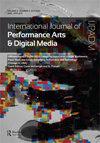考虑大灭绝时代的数字艺术博物馆:通过后人类思维探索数字动物园和水族馆
IF 0.9
0 THEATER
International Journal of Performance Arts and Digital Media
Pub Date : 2022-11-23
DOI:10.1080/14794713.2022.2141427
引用次数: 0
摘要
摘要:本文探讨了最近越来越受欢迎的数字艺术博物馆的可能性,探讨了它们在大灭绝时代如何作为启蒙的新教育设施发挥作用。然后考虑teamLab的两个数字娱乐设施。这些数字装置改变了人类与动物和植物之间传统的不对称关系,例如,通过形成伪亲子动态,从而创造了一种基于平等的互动和跨物种联系。此外,与传统的动物园和植物园相比,数字博物馆在追求真实感的基础上创造了虚拟的自然环境,可以成为可持续博物馆的典范。此外,通过重建灭绝的动植物并将其数字数据传输给下一代,它们可以成为失去记忆的继承地。这些数字娱乐设施的一个问题;然而,数字生物的美学和浪漫主义造型,反映了人类中心意识以及对全景和神圣视角的维护。很难创建一个数字博物馆来解构这种渴望已久的神圣视角。针对这些问题,讨论了一种生态可持续的数字博物馆教育设施的新模式。本文章由计算机程序翻译,如有差异,请以英文原文为准。
Considering digital art museums in the era of mass extinction: exploring digital zoos and aquariums through posthuman thinking
ABSTRACT This paper discusses the possibility of digital art museums, which have recently been gaining popularity, examining how they function as new educational facilities for enlightenment in the age of mass extinction. It then considers two digital amusement facilities of teamLab. These digital installations change the traditional asymmetrical relationship humans have with animals and plants, for example, by forming a pseudo-parent–child dynamic, thus creating an interactive and cross-species connection based on equality. Moreover, compared to conventional zoos and botanical gardens, which exhibit animals and plants in pursuit of realism, digital museums create virtual natural environments based on a nonrealistic orientation and can become models for sustainable museums. Moreover, they can be places for the inheritance of lost memories by reconstructing extinct animals and plants and transmitting their digital data to the next generation. One problem with these digital amusement facilities; however, is the aesthetic and romantic modeling of digital creatures, which reflects anthropocentric consciousness as well as the maintenance of a panoramic and divine perspective. It is difficult to create a digital museum that deconstructs this much-desired divine perspective. Concerning these problems, a new model for an ecologically sustainable digital museum as an educational facility is discussed.
求助全文
通过发布文献求助,成功后即可免费获取论文全文。
去求助
来源期刊

International Journal of Performance Arts and Digital Media
Arts and Humanities-Visual Arts and Performing Arts
CiteScore
1.70
自引率
0.00%
发文量
29
 求助内容:
求助内容: 应助结果提醒方式:
应助结果提醒方式:


